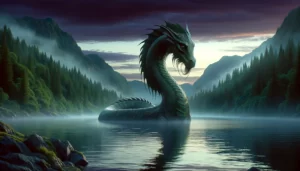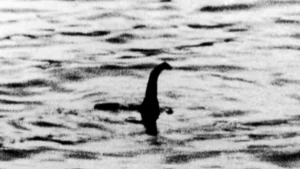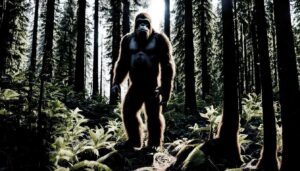Table of Contents
One of the most famous depictions of Nosferatu is in the 1922 German Expressionist film “Nosferatu, eine Symphonie des Grauens” (Nosferatu: A Symphony of Horror), directed by F. W. Murnau. This silent film is an unauthorized adaptation of Bram Stoker’s novel “Dracula,” and the vampire character in the film is named Count Orlok, but it closely resembles the traditional vampire archetype.
Origin
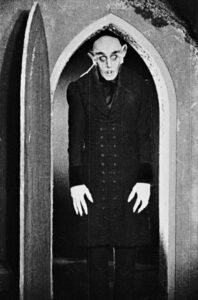
The concept of vampires and Nosferatu has its roots in diverse cultural and mythological traditions. Some key points regarding the origin and development of vampire folklore:
Ancient Mythology: Greece and Rome: The idea of blood-drinking creatures has ancient origins. In ancient Greece and Rome, there were myths about demonic entities or spirits that fed on the blood of the living.
Eastern European Folklore: Slavic and Balkan Regions: The modern vampire legend is strongly associated with Eastern European folklore, particularly in regions such as Romania, Bulgaria, and Serbia. The word “nosferatu” itself has Eastern European origins.
18th-Century Eastern Europe: The vampire myth gained significant attention in the 18th century, with reports of alleged vampire incidents in Eastern Europe. These stories often involved the exhumation of bodies suspected of being vampires and various rituals to prevent them from returning.
Literary Influences: The vampire myth became more widely known in Western Europe through literature. One of the most influential works is Bram Stoker’s 1897 novel “Dracula,” which introduced the character Count Dracula and helped popularize the vampire myth in English-speaking cultures.
Cinematic Influence: The 1922 film “Nosferatu, eine Symphonie des Grauens” played a significant role in shaping the visual representation of vampires in popular culture. While the film was an unauthorized adaptation of Stoker’s “Dracula,” it contributed to establishing certain iconic traits of vampires, such as their fanged teeth and nocturnal nature.
Global Popularity: Over the years, vampires have become a staple in literature, film, and various forms of popular culture. Different cultures and authors have adapted and reinterpreted the vampire myth, leading to a wide variety of vampire characters with diverse characteristics.
The vampire myth continues to evolve, with new interpretations appearing in literature, film, and other media. While the specific details of vampire folklore vary across cultures, the common theme revolves around creatures that sustain themselves by consuming the life force, often in the form of blood, from the living.
Physical Description
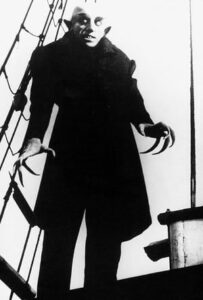
The physical description of vampires, including Nosferatu, can vary widely depending on cultural and literary traditions. There are some common characteristics that are often associated with these mythical creatures:
Pale Complexion:Vampires are often described as having a deathly pale or ashen complexion. This is attributed to their nocturnal lifestyle and their avoidance of sunlight.
Sharp Fangs: One of the most iconic features of vampires is their sharp, elongated fangs. These fangs are used to pierce the skin of their victims and drink their blood.
Red or Hypnotic Eyes: Vampires are sometimes depicted with red or hypnotic eyes, especially when they are in a state of bloodlust or using their hypnotic powers to control others.
Sharp Claws and Nails: In some traditions, vampires may have sharp claws or nails, which they use for various purposes, including attacking their prey.
No Reflection: In certain folklore and literature, vampires are said to cast no reflection in mirrors. This attribute is sometimes used as a means for characters to identify vampires.
Elegance and Allure: Vampires are often portrayed as charismatic and alluring beings. They may possess a certain elegance and charm that makes them attractive to their victims.
Shape-Shifting Abilities: In some traditions, vampires have the ability to transform into other creatures, such as bats, wolves, or mist. This shape-shifting ability allows them to move stealthily or evade capture.
Immortality: Vampires are typically immortal or have greatly extended lifespans. They do not age like humans and may be unaffected by diseases or physical injuries.
Nocturnal Habits: Vampires are creatures of the night and are often associated with nocturnal activities. They are weakened or destroyed by exposure to sunlight.
Coffin or Resting Place: Traditionally, vampires are said to rest during the day in coffins or some other form of resting place, which provides them with protection from sunlight.
Personality
The personality traits attributed to vampires, including Nosferatu, can vary significantly depending on the cultural context and the specific portrayal in literature, film, or other media. Few personality traits often associated with vampires:
Charismatic and Alluring: Vampires are frequently depicted as charismatic and alluring beings. They possess a magnetic charm that draws people to them, making it easier for them to seduce and manipulate their victims.
Enigmatic and Mysterious: Vampires are often portrayed as enigmatic and mysterious figures. They may have a secretive past or hidden motives, adding an air of intrigue to their characters.
Intelligent: Vampires are commonly portrayed as highly intelligent beings. Their extended lifespans and accumulation of knowledge over the years contribute to their intellectual prowess.
Sophisticated and Elegant: Many vampire characters are depicted as having a refined and sophisticated demeanor. They may appreciate art, literature, and cultural pursuits, adding an element of elegance to their personalities.
Manipulative: Vampires are often shown to be skilled manipulators. They may use their charm and hypnotic abilities to control or influence others for their own purposes.
Tragic or Cursed: Some vampire stories explore the tragic aspect of their existence. Vampires may be portrayed as cursed or burdened by the immortality they possess, leading to a sense of loneliness or despair.
Possessive and Protective: In certain narratives, vampires can be possessive and protective of those they care about. This protective instinct may extend to individuals they turn into vampires or form emotional connections with.
Sensual or Romantic: Vampires are often associated with sensuality and romance. Some stories explore romantic relationships between vampires and humans, emphasizing the eternal and passionate nature of such connections.
Aggressive and Predatory: Vampires are predators by nature, and their personalities may reflect a more aggressive and predatory side. They may be driven by a primal desire for blood and survival.
Tormented or Haunted: Some vampire characters are tormented by their undead existence, haunted by memories of their past or the consequences of their actions. This internal conflict adds depth to their personalities.
Special Abilities
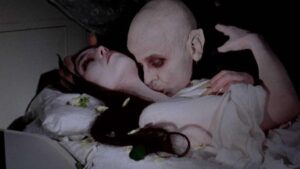
Vampires are often portrayed as supernatural beings with a variety of special abilities. These abilities can vary depending on the cultural and literary traditions, as well as the specific interpretation of vampires in different works of fiction. Few common special abilities associated with vampires:
Immortality: One of the defining characteristics of vampires is their immortality. They do not age and are often depicted as being immune to most diseases and physical ailments.
Superhuman Strength: Vampires are commonly portrayed as having strength far beyond that of humans. This strength aids them in overpowering their victims and foes.
Enhanced Speed and Agility: Vampires are often depicted as incredibly fast and agile, allowing them to move swiftly and silently. This agility is useful for hunting and evading capture.
Heightened Senses: Vampires typically have heightened senses, including enhanced vision, hearing, and smell. This allows them to detect the presence of humans or other creatures from a distance.
Regeneration: Some vampire lore includes the ability to regenerate and heal rapidly from wounds. This regenerative power can make them difficult to kill.
Hypnotic Gaze: Vampires are often portrayed as having a hypnotic or mesmerizing gaze. They can use this ability to influence and control the thoughts and actions of others.
Shape-Shifting: In certain traditions, vampires have the ability to shape-shift into other forms, such as bats, wolves, mist, or even other humans. This power allows them to move covertly and avoid detection.
Mind Control: Vampires may possess the ability to control the minds of their victims, compelling them to do their bidding. This power adds to their manipulative nature.
Ability to Turn Others into Vampires: Vampires are often depicted as having the ability to transform humans into vampires through the process of biting and exchanging blood. The newly turned vampire becomes a subordinate to the sire.
Invisibility: In some folklore and fiction, vampires can become invisible or disappear at will, enhancing their ability to move undetected.
Vulnerabilities: While not exactly an ability, vampires are often associated with specific vulnerabilities. Common weaknesses include sunlight, crosses, holy water, garlic, and wooden stakes through the heart.
Common creatures
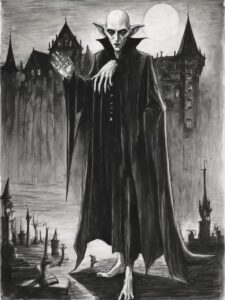
Various cultures and mythologies around the world feature creatures that share similarities with vampires in certain aspects. These beings often exhibit traits such as a thirst for blood, immortality, and a connection to the night. Few examples of creatures similar to vampires from different cultural traditions:
Strigoi (Romanian Folklore): In Romanian folklore, the strigoi is a vampiric creature that is believed to be the troubled spirit of a dead person. Strigoi are often associated with the reanimated dead, blood-drinking, and the ability to shape-shift into animals.
Chupacabra (Latin American Folklore): The chupacabra, which translates to “goat-sucker” in Spanish, is a creature from Latin American folklore. It is often described as a blood-sucking creature that preys on livestock, particularly goats. While not a traditional vampire, it shares a similar thematic element of blood consumption.
Aswang (Philippine Mythology): The aswang is a mythical creature in Philippine folklore known for its ability to shape-shift into various forms, including a bat. Some variations of the aswang are said to feed on the blood of humans or animals, exhibiting vampire-like characteristics.
Vetala (Hindu Mythology): In Hindu mythology, the vetala is a supernatural being known for inhabiting corpses and reanimating them. Vetala stories share similarities with vampire folklore, as these beings are associated with death, the undead, and a penchant for blood.
Jiangshi (Chinese Folklore): Jiangshi, also known as “hopping vampires” or “stiff corpses,” are reanimated corpses from Chinese folklore. While different from the Western vampire, jiangshi share the theme of the undead and a need to consume the life force of the living, often through the blood.
Lamia (Greek Mythology): In Greek mythology, Lamia was originally a beautiful queen who, after a tragic loss, became a child-devouring demon. Over time, Lamia’s character evolved, and in later traditions, she was associated with seduction and vampiric characteristics.
Ekimmu (Sumerian and Akkadian Mythology): The ekimmu is a spirit or demon in Sumerian and Akkadian mythology that is sometimes associated with vampiric qualities. It is said to roam the earth, seeking to drain the life force of the living.
These creatures may not align precisely with the modern Western concept of vampires, but they share thematic similarities, such as a connection to the supernatural, a thirst for vital life forces, and associations with death and the night. The specific characteristics and behaviors of these creatures can vary widely depending on regional folklore and storytelling traditions.


